Point Reyes Recon
Karin and I have taken to putting “DS” days into our calendars. (Do Something) We find it helps to avoid that nasty tendency of having a week go by and saying “what happened?”. Yesterday was a DS day, and we had no specific action planned. It was also HOT, even at the coasts nearby.
Long story short, we decided to scoot up to Point Reyes for just a day’s exploration and reconnaissance, gathering information for a longer, more adventurous future trip. We specifically wanted to know more about kayaking, both on Tomales Bay (straightforward) and Drake’s Bay with it’s Esteros (estuaries) that make for nasty tidal mud flats. We’ve watched some online videos and images of kayakers getting caught-out at low tide. It’s not a pretty picture.
Point Reyes is actually a big chunk of land, most of which is reserved National Seashore. There is limited space to RV camp, but huge tracts of land are open to hiking and biking, and most of the water’s edges are available to kayak.
We entered the reserve by the only road, Sir Francis Drake Blvd. We had come via Lucas Valley road at the suggestion of our GPS, which (as frequently happens) was somewhat addled advice. Lucas is tiny, slow and serpentine, while Francis Drake is 45mph most of the way. Oh well, at least we learned before bringing Howie up there.
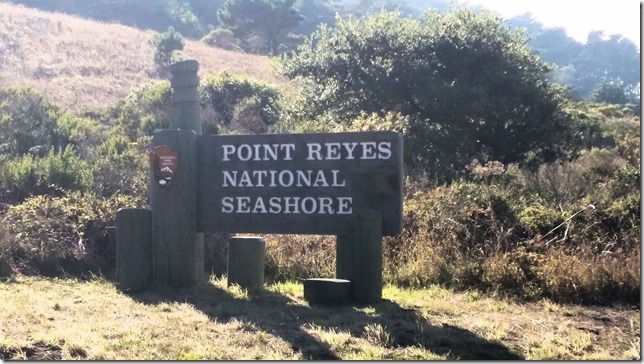
Typical coastal vegetation gave way to the dunes and hills of the major area of the Point. Our first port-of-call was the Drake’s Bay Oyster farm, not for oysters but because it’s the only kayak put-in beside those for Tomales Bay. It being a Monday, the workers were full at their jobs, using pneumatic hammers to pry open the oyster shells. We thought at first the “puttttputtttputttt” was someone trying to start an outboard, but it was actually air-hammers modified to shell-splitters.
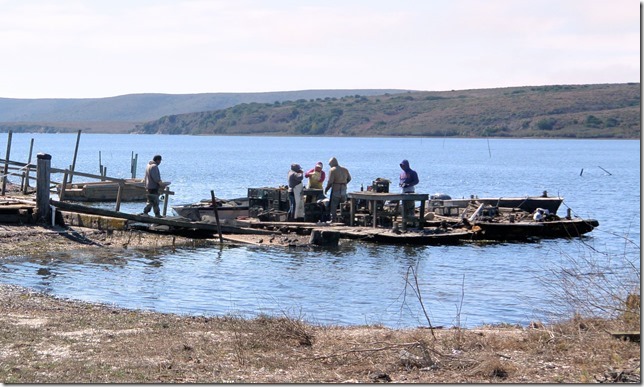
It’s a typical “working shore”, with battered equipment, and old relics beat to rusty skeletons by the constant assault of the wind and sea.
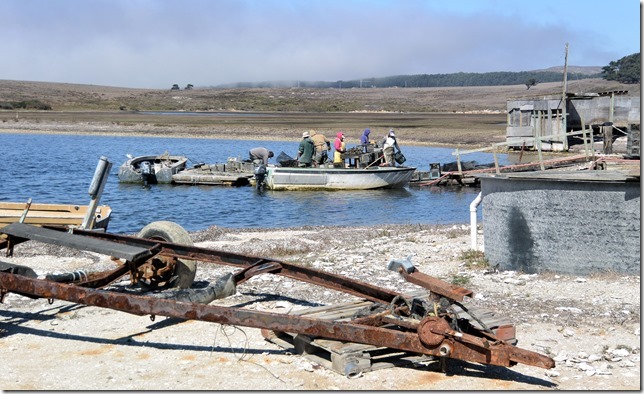
There has been so much oyster growth (and death) in this area that the entire shoreline is almost entirely composed of oyster shells. It is only after 30 feet out into the water that the tidal mud takes over.
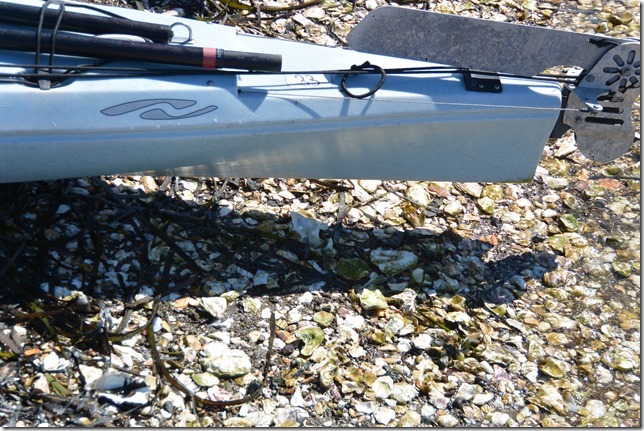
While the oyster-men toiled away shucking their catch, another set of workers gathered their business together on the oyster-shell shoreline. Kayak touring was about to get under way.
A small band of guides – very courageous guides, I might add – were marshalling up a group of 38 high-schoolers on a field trip (from Texas). In addition to the usual training and coordination, the enterprise was assailed by a small but persistent population of yellow-jackets, drawn by the continuous oyster-feed activity I assume. Although the little bee-looking creatures don’t have much of a sting or bite, some of the kids were hilariously frightened, literally running over each other to escape certain death at the tails of the striped marauders.
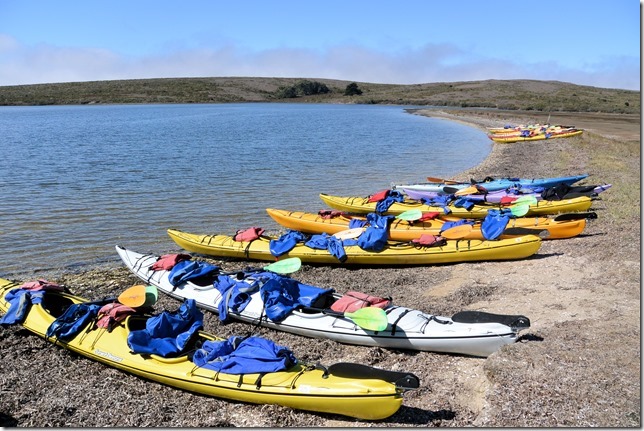
After an endless series of donning clothing, then taking it off to shed sweaters and re-donning, then taking it off again to go the the restroom, then re-donning, pretty much all the kids got into their respective kayaks and were ready to go. This shot shows about 1/3 of the whole group.
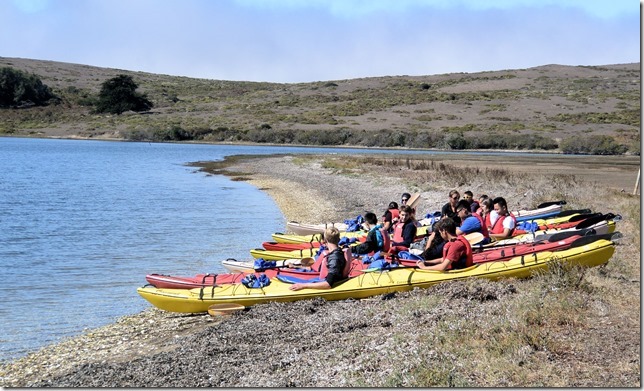
Second 1/3, first one gone with a vigorous push by the guide.
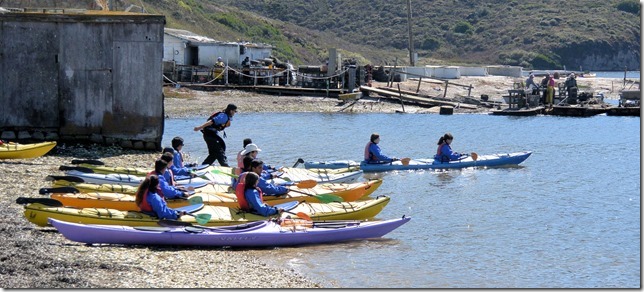
Last ones on the water – a couple of girls who managed to shrill out “Omigod” at least 7 times for each uncoordinated set of paddle strokes. But even with all that, they were managing to go more or less in their intended direction with only 10 minutes of seemingly random experimentation.
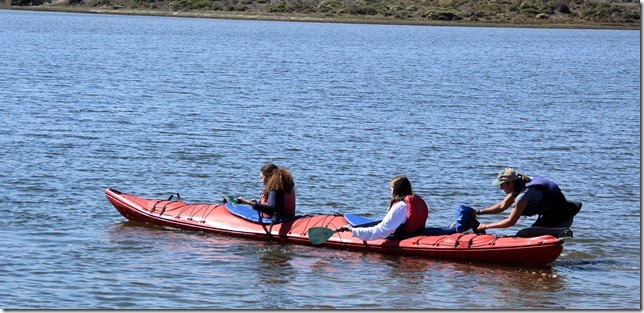
I think they put enough boats in the water to raise the level in the Estero. Fun being had by all.
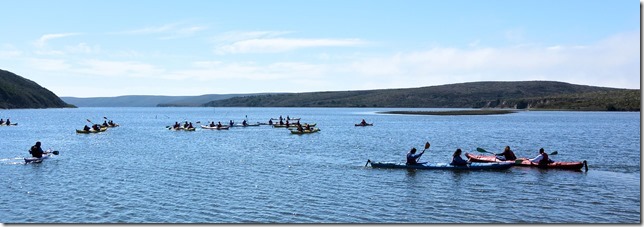
We talked at length with the guides (and also earlier with a Ranger), and got a pretty good idea how to safely navigate the Estero by doing the right kind of tide research and planning. Then it was time to check out some of the other features of the Point. We had previously visited the Lighthouse, on a tandem bicycle ride – so we focused our attention on side roads and un-seen places.
Over on the western shore (oddly enough named North and South shores), the fog/overcast had never lifted, and the severity of the exposed shoreline was exacerbated by the gloom of the stratus. Wind-swept, wave-pounded, with nothing to the west until Asia – the beach is a beautiful, lonely place to get in touch with the impersonal side of Nature.

Even hardy marine creatures are not immune to the fierce surf – hundreds of small jellyfish had washed up and decorated the beach with their translucence.
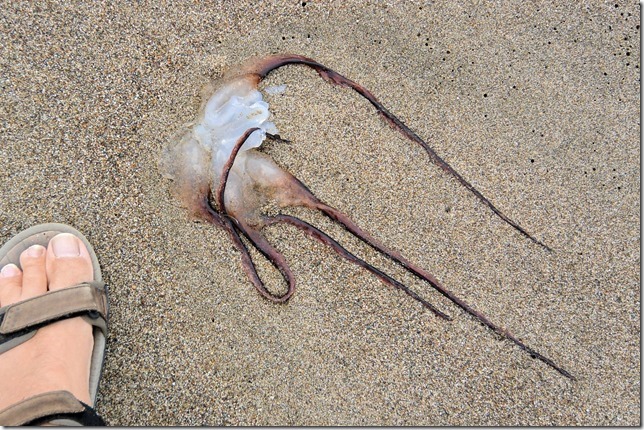
This building is only an out-house, but its build and surrounds are iconic of the beaten shore. The foreground ice-plant is an invasive species and is killing the indigenous ones; there are large programs under-way to eliminate it, and the European Beach Grass as well. Nice to see people working to undo some of the damage we’ve created.
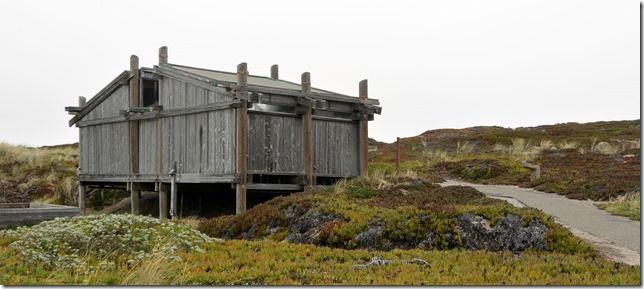
Driving eastward, we managed to sneak out from under the encroaching fog. Even late in the day, we were able to see Tomales bay in the sunshine of the waning afternoon. The land, forests, and overcast framed the bay, as if they were jointly trying to bottle up and covet the last warm rays of the day.
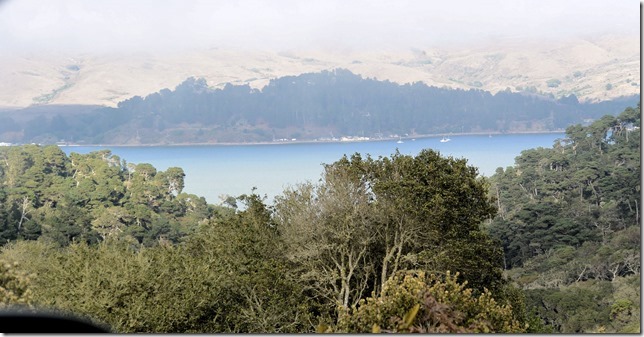
We wandered down to Heart’s Desire Beach, a tiny cove with parking and rest rooms, but no overnight camping allowed. The little tent on the beach gave a lonesome-camper appearance where, sadly, none would be permitted.
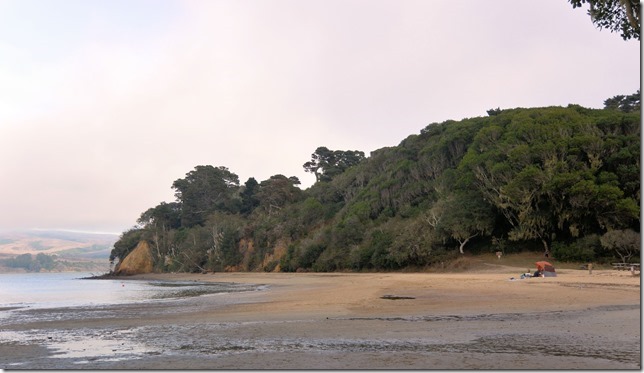
From just around the end of the beach to the south, things look truly rugged through the tidal wreckage of too-close vegetation.
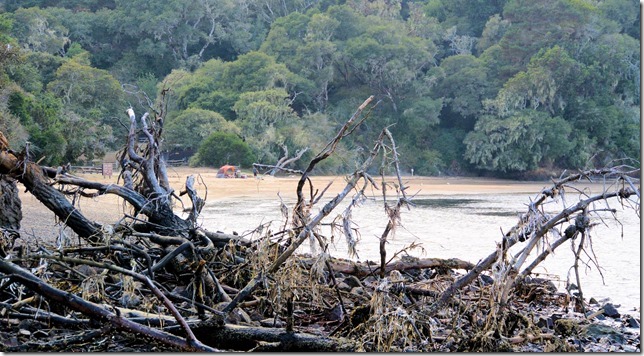
As sunset threatened, we drove east on Francis Drake to check out Samuel P Taylor park. There is decent RV camping there, but it’s 7 miles farther away than the RV camp at Olema, so we’ll likely stay over to the west. As we were leaving, a scavenging raccoon scurried away from us. We waited for him to get curious, but he just waved goodbye and ducked down a drainpipe.
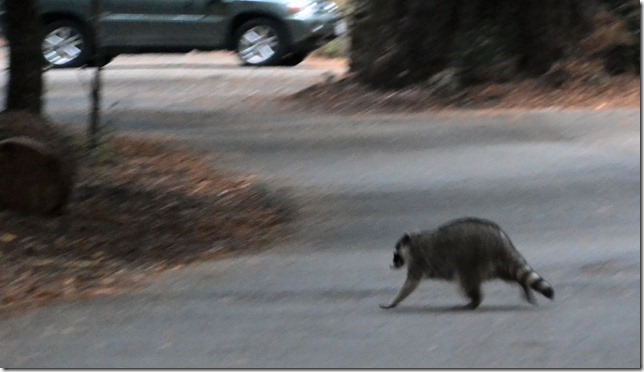
Home was only 2.5 hours away, and we had missed all the commute traffic. A dang fine day.

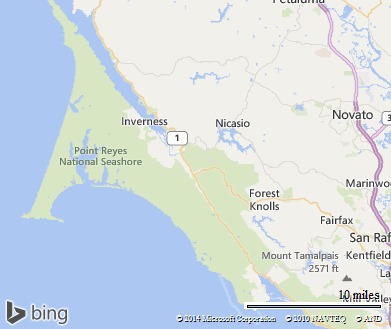
Great to read your blog, now that I dont have to write one!! Had a chuckle over the name Hearts Desire. In Newfoundland there are many gorgeous names, such as (cant remember exactly) Fannys Hole, Fannys Armpit, Little Hearts Ease (pronounced “little earts Hease” by these Scottish/Irish/Canadian/Newfie speakers! We saw the biggest Hiceburg!